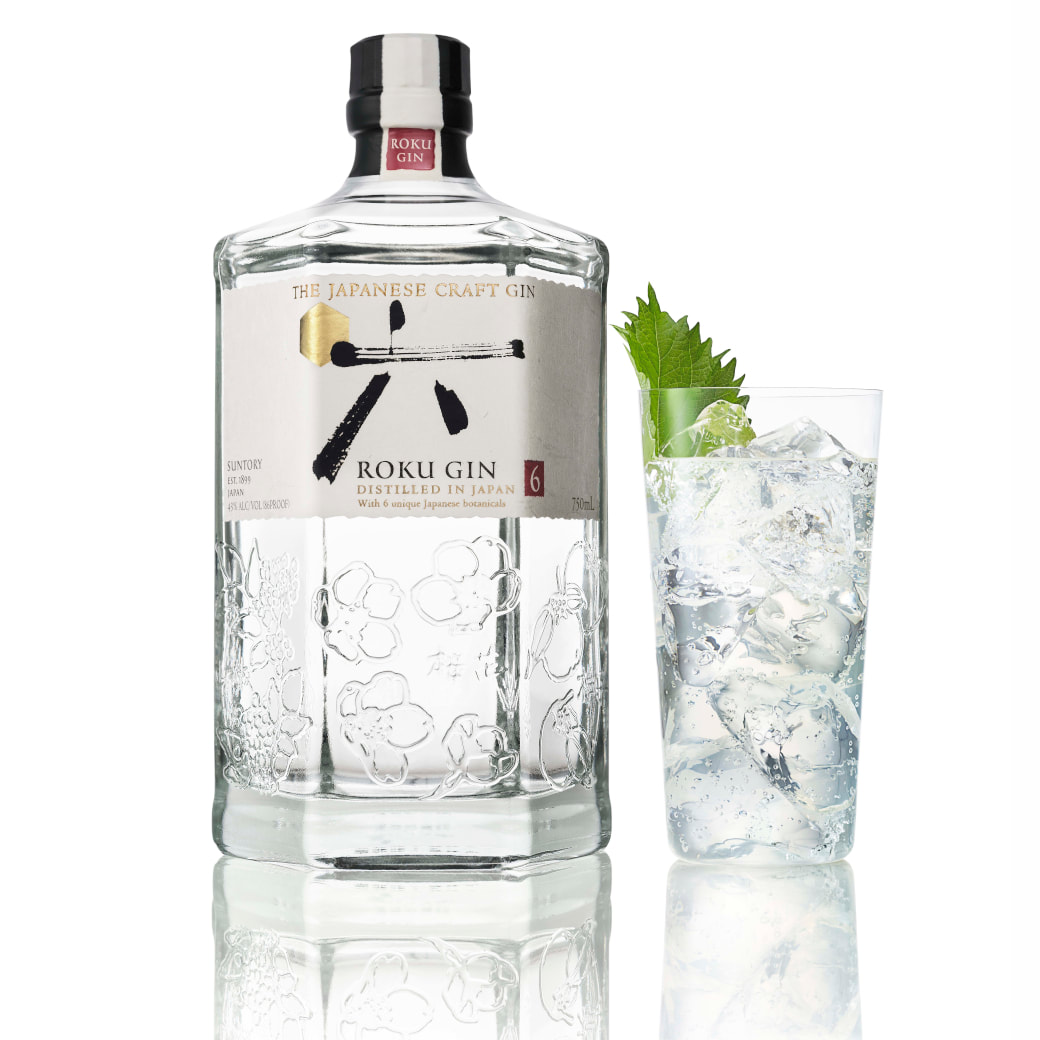- Subscribe
- Digital Edition
-
Beverage Guide
- Flavor and Cocktail Construction >
- Production Fundamentals >
- Non-Alcoholic Beverages >
-
Beer
>
- Cider >
- Sake
-
Spirits
>
-
Wine
>
- Kamaʻāina Wine Makers >
-
Winemaking
>
- A Guide to: High Sugar Residual Wines
- A Guide to: Post Fermentation Flavor Adjustments
- A Guide to: Post Fermentation Process: Stabilization
- A Guide to: Wine Prefermentation Practices
- A Guide to: Wine Microbes
- A Guide to: Wine Alcoholic Fermentation Physical Environment
- A Guide to: Wine Fermentation Chemical Environment
- A Guide to: Wine Bottling
- A Guide to: Wine Faults
- A Guide to: Wine Polyphenols
- A Guide to: Wine Aroma Compounds: Pt 1
- A Guide to: Wine Aroma Compounds: Pt 2
- A Guide to Viticulture
- Red and White Grape Aroma Compounds
- Wine Styles >
- Business Strategy
- News and Events
- About
- Production Fundamentals
- Flower Aroma Compounds
- Flavor Pairing and Recipe Development
ROKU JAPANESE GIN
Roku Gin, which launches in the U.S. this month at a suggested retail price of $27.99, will be available in a 750ml bottle at 43% ABV. Roku, which translates as “six” in Japanese, is made with six traditional Japanese botanicals that are infused, distilled and blended by the Japanese artisans of Suntory Spirits in Osaka, Japan. The premium craft gin’s flavor profile is achieved by balancing six unique Japanese botanicals with eight traditional gin botanicals. The Japanese botanicals – Sakura flower, Sakura leaf, Yuzu peel, Sencha tea, Gyokuro tea and Sansho pepper – are harvested in accordance with ‘shun’, the tradition of enjoying each ingredient at its best by only harvesting at its peak of flavor and perfection. It is then distilled using a selection of different pot stills, each chosen to ensure the best flavor is extracted from each botanical. Its bottle and label have been carefully designed to appeal to the Japanese sense of aesthetics and beauty. Roku’s bottle is cast in a hexagonal shape, representing each of the six uniquely Japanese botanicals inside, and is finished with delicate embossing. The Japanese kanji symbol for six is printed on the label, which is made of traditional washi paper. Roku can be enjoyed neat, on the rocks or in the Roku Rickey, a Japanese twist on a classic cocktail. The pairing of chilled soda water with Roku enhances the gin’s aromatic and floral notes from the botanicals. According to Suntory: ROKU | TASTING NOTES Nose: Cherry blossom and green tea provide a floral and sweet aroma. Taste: Complex, multi layered, yet harmonious flavor of various botanicals. A traditional gin taste in the base, plus characteristic Japanese botanical notes with yuzu as the top note gives a smooth and silky texture. Finish: The crisp Japanese Sansho pepper brings a hint of spiciness to the finish. “For the House of Suntory, craftsmanship has always translated to sourcing the best ingredients, and elaborating on complex and innovative techniques to create unrivaled quality spirits,” said Kazuyuki Torii, Suntory Specialist for Gin and Spirits. “These unique liquids were developed from a vision to create truly authentic Japanese products that meet the demand for a meticulously crafted gin and vodka with a distinct and balanced taste.” ABOUT SUNTORY Suntory was established in 1899 and is headquartered in Tokyo, Japan. Since 1923, as the pioneer of Japanese whisky, Suntory Whisky has been renowned for its House of Master Blenders and for their Art of Blending. The founding father of Japanese whisky, Shinjiro Torii, built Japan’s first malt whisky distillery in Yamazaki. Nestled in the outskirts of Kyoto, this region was the birthplace of the traditional Japanese tea ceremony and is known for the purity of its waters. Torii dreamt of creating an authentically Japanese whisky by choosing a terrain and climate completely different to that of Scotland, thereby cultivating unique conditions for maturation. In 1972, Torii’s son Keizo Saji, Suntory’s second master blender, built the Chita grain distillery near Nagoya to produce more of their own high-quality grain whiskies. In 1973, Saji founded the Hakushu distillery amidst the deep forests of Mt. Kaikomagatake in the Japanese Southern Alps with the goal of producing malt whiskies distinct from those made at Yamazaki. Its high altitude and lush environment are what differentiates Hakushu from other distilleries. At each of these distilleries, a diverse array of whiskies are produced through various fermentation techniques, shapes and sizes of giant copper pot stills, and the wide variety of cask types used. Today, roughly 1,200,000 casks of whisky are quietly maturation in Suntory’s aging cellars. This tsukuriwake—variety in the making—allows for the blending opportunities that are essential to achieving the subtle, refined yet complex taste signature to Suntory Whiskies. With respect to heritage and a commitment to innovation, third generation master Blender Shingo Torii, and grandson of Shinjiro, now leads this most highly awarded house of Japanese Whisky. The House of Suntory Whisky has been named four-time Distiller of the Year at the International Spirits Challenge in London, UK (2010, 2012, 2013, 2014). The House of Suntory portfolio includes two single malt whiskies: Yamazaki – the pioneer of Japanese Single Malts, multi-layered and profound, and Hakushu – verdant, fresh, and delicately smoky; a single grain whisky: Chita—sublimely smooth, versatile and complex; and two blends: the noble blend, Hibiki – Japan’s most highly awarded blended whisky, and Suntory Whisky Toki – ideal for Japanese highballs. Visit www.house.suntory.com for more information.
0 Comments
Leave a Reply. |
Archives
April 2019
Categories |
MENU
|
HOME
|
SUBSCRIBE |
DIGITAL
|
BEVERAGE
|
NEws and
|
ABOUT |
CONTACT |
©2022 Hawaii Beverage Guide
Terms & Conditions
Terms & Conditions
- Subscribe
- Digital Edition
-
Beverage Guide
- Flavor and Cocktail Construction >
- Production Fundamentals >
- Non-Alcoholic Beverages >
-
Beer
>
- Cider >
- Sake
-
Spirits
>
-
Wine
>
- Kamaʻāina Wine Makers >
-
Winemaking
>
- A Guide to: High Sugar Residual Wines
- A Guide to: Post Fermentation Flavor Adjustments
- A Guide to: Post Fermentation Process: Stabilization
- A Guide to: Wine Prefermentation Practices
- A Guide to: Wine Microbes
- A Guide to: Wine Alcoholic Fermentation Physical Environment
- A Guide to: Wine Fermentation Chemical Environment
- A Guide to: Wine Bottling
- A Guide to: Wine Faults
- A Guide to: Wine Polyphenols
- A Guide to: Wine Aroma Compounds: Pt 1
- A Guide to: Wine Aroma Compounds: Pt 2
- A Guide to Viticulture
- Red and White Grape Aroma Compounds
- Wine Styles >
- Business Strategy
- News and Events
- About
- Production Fundamentals
- Flower Aroma Compounds
- Flavor Pairing and Recipe Development


 RSS Feed
RSS Feed